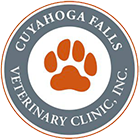Just as heart disease is a major player on the human side of healthcare, we also see many cases of heart disease in our animal friends. Interestingly, there are many similarities between the types of heart disease seen with humans: the physiology is awfully similar and the muscular changes over time are similar. But also some very notable differences: e.g. dogs and cats do not develop atherosclerosis as people do and they do not experience heart attacks as people do. We’ll leave it to the other Clinic to be the last word in human heart health, so for the purposes of this blog post, I’ll hit the high points of how heart disease impacts our canine and feline patients and what types of heart disease we see.

First of all, if you see symptoms of heart disease at home, please bring them to our attention. Common symptoms that our owners describe include: coughing, exercise intolerance, pale or bluish mucous membranes, and lethargy. There are other symptoms that we can determine while performing a physical examination such as an increased heart rate, fluid in the lungs, weak pulses and/or a heart murmur.
An important concept that ought to be understood about the heart is that it isn’t just a pump, but rather it is two pumps. The right side of the heart is a pump that accepts blood from most of the body and sends it to the lungs. The left side of the heart is a pump that accepts blood from the lungs and sends it to the rest of the body. Animals can experience disease of either side or both. Depending upon which side is diseased, particular and distinctive symptoms will show up.
If you’ve got a pump in your basement that is supposed to prevent flooding by sending water out to the street, what happens when the pump fails? Water backs up behind the pump and your basement floods… yikes. The same holds true for the heart. If the right side of the heart begins to fail, it cannot efficiently send blood to the lungs, and as a result, blood backs up in the body and fluid leaks out of the vessels into the surrounding tissues.
On the flip side, if the left side of the heart begins to fail, it cannot efficiently send blood to the body, and as a result, blood backs up in the lungs and fluid leaks out of the vessels and into the area of the lungs where air is supposed to be. This is congestive heart failure.
There are three major forms of heart disease in the dog and cat world: dilated cardiomyopathy, hypertrophic cardiomyopathy, and unclassified or restrictive cardiomyopathies. Each set up particular scenarios in the heart that cause the heart to perform inefficiently. Diagnostic tests such as radiographs, echocardiogram (ultrasound of the heart), and electrocardiogram (ECG or EKG) help to determine which is at play and therefore which forms of treatment will be most helpful.
Heart disease is not curable, but is often very treatable, and often on an outpatient basis. Medical therapy, diet therapy, and exercise/lifestyle adjustments can often help to restore quality of life to the patient suffering from heart disease.
If you have any questions about your pet’s heart condition, or if you’re worried about some symptoms that you’re seeing at home, please give us a call at 330-929-3223 so we can review your concerns and make sure your pet is as healthy as he/she can be.


The Cuyahoga Falls Veterinary Clinic | Animal Wellness | Medical Services | Pet Services
[…] Heart Disease Overview […]